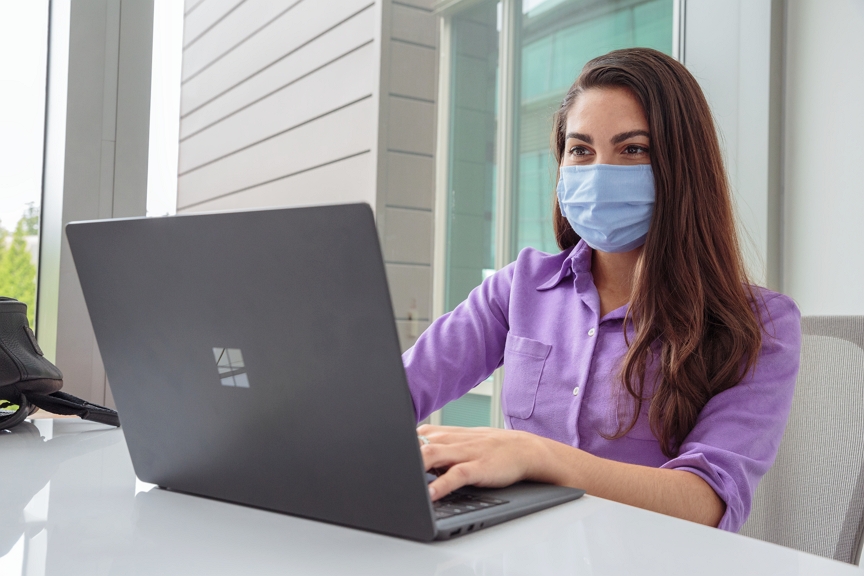By Ira Gupta, HR Head, Microsoft India
 2020 has been a year like no other. On one hand, it has been uncertain and unsettling for some and on the other it has also been a time of deep transformation, of affirmative action and of resilience. We saw organizations across the world and in India adapt and support employees, as we collectively learnt to navigate this new world. On the whole, I enter 2021 with a deep sense of gratitude and optimism. What continues to give me hope is how we have stepped up as a community to face challenges and to completely reimagine previously held concepts about culture, teamwork, and building social capital.
2020 has been a year like no other. On one hand, it has been uncertain and unsettling for some and on the other it has also been a time of deep transformation, of affirmative action and of resilience. We saw organizations across the world and in India adapt and support employees, as we collectively learnt to navigate this new world. On the whole, I enter 2021 with a deep sense of gratitude and optimism. What continues to give me hope is how we have stepped up as a community to face challenges and to completely reimagine previously held concepts about culture, teamwork, and building social capital.
I don’t think anyone can claim to know exactly what the future holds, but I certainly believe that culture and values are core to building a more resilient workforce. How do we keep our culture intact in the absence of in-person connections or integrate new employees into the company culture when they have never met their colleagues? These continue to be important questions as organizations evolve in their journey through this pandemic. The way leaders role model culture and colleagues embrace it ultimately defines how organizations enable employees to adapt to unique circumstances and do their best work.
Today in this virtual environment, work is no longer just about productivity and output; it is also deeply about flexibility, about wellbeing and about effective collaboration. The fundamental question that arises is: Is it good enough to simply replicate what was previously done in the office, in a virtual context?
Perhaps not. Findings from Microsoft’s Work Trend Index 2020 report, which surveyed workers across industries in eight countries, found that close to one third of the workers in India cited increased rates of burnout over a six-month period. At a deeper level, it indicates that we have much more to do collectively to make the remote and hybrid work experience more empowering. Given the variety of roles, work requirements and diverse business needs, there is no ‘one-size-fits-all’ approach. What has been helpful is a fresh look at how we approach flexibility, wellbeing and inclusion, in a way that is sustainable and benefits both employees and organizations in the long term.
Let’s look at flexibility. The concept of a nine-to-five workday is rapidly fading, giving way to fluid work models and flexible hours. We’re spending more time communicating with one another digitally, and often outside of traditional work hours. In Microsoft Teams, for instance, we’re seeing the number of chats and meetings per person continue to grow, especially after hours. Meanwhile, workdays around the world are increasing in length. Employees are carving out pockets of personal time to care for children, get some fresh air, exercise, or manage household priorities. Given these changing needs, organizations will need to start thinking of ways to offer as much flexibility as possible to support individual workstyles, while balancing business needs.
While there are many things we will continue to learn as we move forward in this journey, what is clear is the absolute centrality of prioritizing wellbeing in these times of change. We’ve lost commute time, breaks, and transitions between meetings. Social capital is being spent down. How can we help care for employees? It is heartening to see many more open conversations around mental health and organizations introducing policies that support the health and wellbeing of their employees. At Microsoft India, we recently included mental health in our leave policy, enabling employees to take time off for themselves or for a family member, similar to how they did for physical illness in the past. We are also integrating wellbeing experiences into our products, to help prioritize wellbeing for every employee.
Inclusion has taken on a whole new meaning with the juggling of personal and professional responsibilities. In a regular office environment, everyone had access to the same technology, infrastructure, and space. Remote work changed that completely. Many of us now do not enjoy those benefits or for that matter the privacy that an office space offered. As we look ahead, organizations are becoming more sensitive and intentional about building workplaces that are inclusive, accessible, and committed to empowering every person to do their best work, agnostic of work environment.
Inclusion is not just about culture, but also about technology. Technology will have a prominent role to play in ensuring we empower every employee in the organization, including people with disabilities, for a seamless remote work experience. The technology tools we use need to be inclusive, accessible, and secure by design, to make virtual interactions more natural, more engaging, and more human.
As we move towards the future of work, this is an opportunity for all of us to question, to reimagine and transform how we view work, life and above all, integrating the two in a way that is productive, balanced, inclusive and enables flexibility. Ultimately change comes from each of us in the work we inspire, the people we empower and the grace we give, to enable each other in these times of change.




